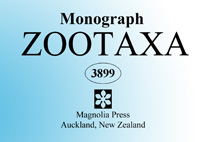Abstract
The Miocene mega-wetland of western Amazonia holds a diverse, largely endemic ostracod fauna. Among them, especially the genus Cyprideis experienced a remarkable radiation. Micropalaeontologic investigations of a 400 m long sediment core (~62 km SW Benjamin Constant, Amazonia, Brazil) permitted a taxonomic revision of about two-thirds of hitherto described Cyprideis species. We evaluate the diagnostic value of shell characters and provide an extensive illustration of the intraspecific variability of species. Based on comparative morphology, the 20 recorded Cyprideis species are arranged in groups and subgroups. The “smooth” group comprises C. amazonica, C. kotzianae, C. kroemmelbeini, C. machadoi, C. multiradiata, C. olivencai, C. paralela and C. simplex; the “ornate” group C. curucae nom. nov., C. cyrtoma, C. aff. graciosa, C. inversa, C. ituiae n. sp., C. matorae n. sp., C. minipunctata, C. munoztorresi nom. nov., C. pebasae, C. reticulopunctata, C. schedogymnos and C. sulcosigmoidalis. Five species have been revalidated, two renamed, two synonymised and two are new descriptions. Along with 10 further formally established species, for which a review is pending, Cyprideis keeps at least 30 endemic species in that region during Miocene times. Up to 12 Cyprideis species have been found to occur sympatrically, representing >90 % of the entire ostracod fauna. Ostracod index species enable a biostratigraphic allocation of the well succession to the Cyprideis minipunctata to Cyprideis cyrtoma biozones, corresponding to a late Middle to early Late Miocene age (late Serravallian–early Tortonian).

